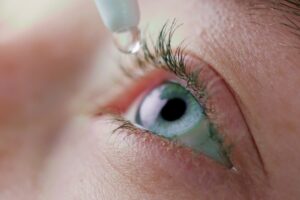February 1, 2024
By Luke Seesink, BApplSci

Photo Credit: mputsylo, iStock
According to this study, there is significant variability in the quality and consistency of compounded 0.01% atropine ophthalmic solutions across different compounding pharmacies in the U.S. This inconsistency in formulation, concentration, pH, and osmolarity could potentially pose risks to the efficacy and safety of these solutions in pediatric myopia management.
The median measured concentration of the compounded solutions was found to be around 93.3% relative to the prescribed concentration, with a range of 70.4% to 104.1%. Notably, a quarter of the samples didn’t meet the minimum target concentration of 90% for 0.01% atropine. Such variability in concentration highlights the need for standardized practices in the compounding of atropine solutions to ensure reliable and safe use in clinical applications.
This research underscores the important role of regulatory oversight and quality assurance in the pharmaceutical compounding industry, especially for medications used in pediatric care. It’s crucial to ensure that compounded medications meet the required standards of quality and safety for the health and well-being of patients, especially children.
Abstract
Compounded 0.01% Atropine — What’s in the Bottle?
Kathryn Richdale, Kelsea V. Skidmore, Erin S. Tomiyama, and Mark A. Bullimore
Objective: To describe the labeling, packaging practices, and characteristics of compounded 0.01% ophthalmic atropine.
Methods: A convenience sample of parents of children who had previously been prescribed low-concentration atropine for myopia management were randomized to obtain 0.01% atropine ophthalmic solution from one of nine compounding pharmacies. The products were analyzed for various important quality attributes. The main outcomes were labeling practices, concentration of atropine and degradant product tropic acid, pH, osmolarity, viscosity, and excipients in 0.01% atropine samples obtained from nine US compounding pharmacies.
Results: Twenty-four samples from nine pharmacies were analyzed. The median bottle size was 10 mL (range 3.5–15 mL), and eight of nine pharmacies used clear plastic bottles. Storage recommendations varied and were evenly split between refrigeration (33%), room temperature (33%), and cool, dark, dry location (33%). Beyond use dates ranged from 7 to 175 days (median, 91 days). Median pH of samples was 7.1 (range, 5.5–7.8). Median measured concentration relative to the prescribed concentration was 93.3% (70.4%–104.1%). One quarter of the samples were under the 90% minimum target concentration of 0.01%.
Conclusions: An inconsistent and wide variety of formulation and labeling practices exist for compounding 0.01% atropine prescribed to slow pediatric
Richdale, K., Skidmore, K. V., Tomiyama, E. S., & Bullimore, M. A. (2023). Compounded 0.01% Atropine—What’s in the Bottle?. Eye & Contact Lens, 49(6), 219.
DOI: https://doi.org/10.1097/ICL.0000000000000990
 |
Luke Seesink, BApplSci, (Orthoptics)(Hons), is a Genomic Research Participant Manager for the Garvan Institute. He has worked for almost 20 years as a qualified orthoptist and in a variety of different clinical research roles within ophthalmology and beyond. |













